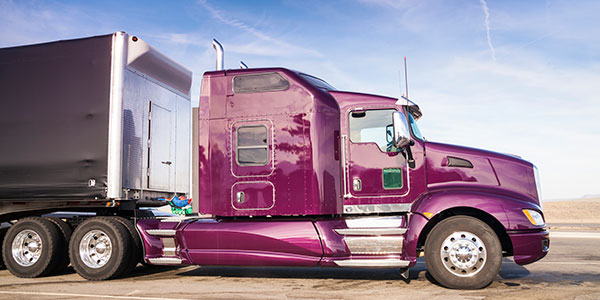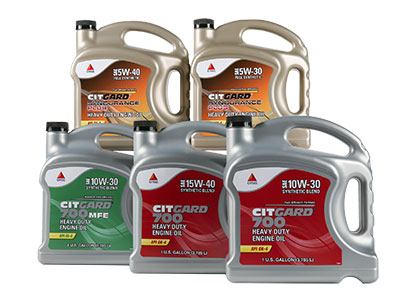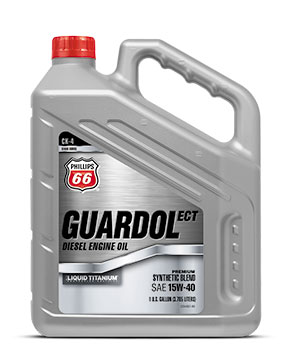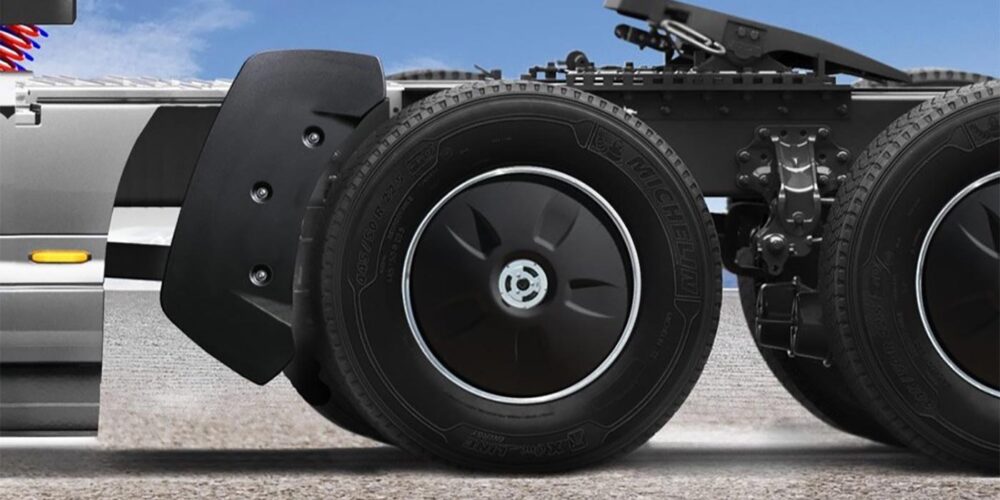In March of 2016 the American Petroleum Institute (API) announced that it had approved two new diesel engine oil standards: API CK-4 and API FA-4. Dec. 1, 2016 marked the first day these oils became available for fleets.
Basic information
“[The new oil categories] are designed with improved oxidation resistance, shear stability and aeration control,” says Stede Granger, OEM technical services manager for Shell Lubricants. “API FA-4 oils meet these new requirements and include lower viscosity grades designed for next-generation on-road diesel engines to help maximize fuel economy without sacrificing engine protection. These oils have limited backwards compatibility because some older engines were not designed to operate with lower viscosity grades.”
“Both API CK-4 and API FA-4 engine oils represent a significant improvement over API CJ-4 engine oils,” adds Steve Haffner, North American market manager for Infineum USA L.P. “Higher operating temperatures have driven improvements in oxidation protection in order to minimize acid formation, deposits and viscosity increase. Both categories also benefit from improved aeration performance. Furthermore, the API FA-4 category allows the use of lower high temperature-high shear [HTHS] viscosity engine oils than those allowed for API CK-4. These lower HTHS oils facilitate even greater fuel economy than API CK-4 in diesel engines.”
Additive chemistry
The additive chemistry of CK-4 and FA-4 oils is similar, but they should not be used interchangeably, Granger says. CK-4 oils have a higher HTHS and operating temperature viscosity than FA-4 oils. Low HTHS oils are designed to provide fuel economy above and beyond current CJ-4 and CK-4 oils through the use of lower viscosity oils. Low viscosity Shell Rotella T5 Ultra 10W-30 will provide a fuel economy benefit due to its low HTHS, Granger says.
These new engine oil requirements, especially for FA-4, are a major change in the industry’s approach to heavy-duty oil specifications. According to Granger, “engine oil producers will need to continue to deliver excellent wear protection and cleanliness—two factors that help to drive down customers’ maintenance costs and prolong engine life. The expected drain of CK-4 and FA-4 oils should improve verses CJ-4 oils. Several engine manufacturers have already announced longer drain intervals using high quality CK-4 and FA-4 oils. Shell Rotella engine oils not only meet the new requirements, but also meet many additional OEM engine requirements.”
Mixing oils
Mixing API CK-4 with API CJ-4 oils when changing inventory or when adding oil on the road will not result in an oil incompatibility problem nor not cause harm to older or newer engines.
“However, since there are performance advantages in using API CK-4 oils, mixing should be minimized to take advantage of the performance benefits of CK-4 oils,” says Mark Betner, product manager of heavy duty lubricants for Citgo Petroleum Corp.
API FA-4 oils should only be used when recommended by the engine manufacturer in specific engine make and model years. For example, some engine manufacturers have announced which of their 2017 engines are API FA-4 compliant and which of their older engines can use API FA-4 engine oils. Considering that there are specific engine manufacturer recommendations for using FA-4 engine oils, mixing of FA-4 oils with either API CK-4 or API CJ-4 oils is not recommended.
“An infrequent or accidental mixing of an FA-4 oil for purpose of add oil or an accidental onetime engine oil change will generally not cause engine problems under those conditions,” Betner adds. “However, any long term or continued use in engines that are not recommended for FA-4 oils may result in engine problems over time. It is very important that equipment owners consult with your engine manufacturer regarding the specific engine oil recommendations and application.”
Dr. Scott McQueen, manager of research and product development for Phillips 66 Lubricants, says, “As long as the oils are the same viscosity, mixture of CJ-4 and CK-4 will cause no problems. The two will be compatible in service, but mixing should be kept to a minimum to ensure benefits of upgraded CK-4. However mixing of FA-4 oils with CK-4 or CJ-4 should be avoided due the lower operating viscosities inherent in the new FA-4 oils.” As for the accidental mixing of FA-4 with either API CJ-4 or CK-4 engine oils, he says, “In an application calling for the use of FA-4, mixing with some CK-4 or CJ-4 will not harm the engine but will sacrifice the fuel economy benefits. For applications calling for CK-4 or CJ-4, use of FA-4 oils or mixtures will lower operating viscosities and could damage some engines in prolonged use.”
Infineum’s Haffner agrees. “We would not expect any impacts if the mixture was limited to accidental top off or use was only for a short period of time. API CK-4 oils are intended to be completely back serviceable, so use in older engines calling for CJ-4 oils should not be a problem. Use of CJ-4 in newer engines should be minimized. While many of those engines still allow API CJ-4, oil drain intervals may be shortened. Mixing FA-4 oils with either CJ-4 or CK-4 should be avoided if engines are not designed for the lower viscosity oils,” he says.
Increased benefits
CJ-4 oils were very advanced oils when introduced, and CK-4 and FA-4 improve upon their technology and help meet changing engine regulations and new engine requirements. The new generations of higher-performing diesel engine oils will help protect new and older engines.
“Engine changes place more stress on the oil, which has to lubricate, cool, clean and protect over long oil-drain intervals,” Shell’s Granger says. “The vehicle industry is starting to recognize that oil can help to achieve an engine’s full potential for fuel economy without compromising hardware durability. As engine manufacturers create cleaner, more fuel-efficient diesel engines, they will have a new generation of higher-performing diesel engine oils to protect them.”
Engines have changed considerably since CJ-4 was introduced. They have improved fuel consumption and increased power outputs. New EPA emission regulations and NHTSA legislation scheduled for diesel-powered commercial transport vehicles in 2017 requires significant improvements in fuel consumption that will help to reduce carbon dioxide emissions. These fuel consumption improvements depend on vehicle class, type and size, and include specific improvements for medium- and heavy-duty engines. Many of the new oils are 5W-30 or 10W-30 oil instead of 15W-40 and these oils are tested for use in many engines; Shell has conducted millions of miles of on-highway testing on these lower viscosity engine oils, Granger relates. Several engine manufacturers are recommending lower viscosity engine oils which may provide improved fuel economy and better cold weather start up.
Engine maker requirements
Many fleets have been asking if engine manufacturers will require the use of API CK-4 or API FA-4 oils. Citgo’s Betner answers: “Engine manufacturers have supported and have contributed to the development of new API CK-4 and FA-4 oils. The current position is to recommend the new oils where applicable, but the new oils are generally not required to meet engine warranties. This position is subject to updates in the future, as engine manufacturers will continue to communicate with their distribution network and customers. This also means that the use of API CJ-4 is still acceptable by many engine manufacturers. It’s important to check with your engine manufacturer for engine oil recommendations.”
“Some OEMs are also allowing slight increases in oil drain intervals with the new oils,” Haffner adds. “Most marketers have also announced plans to transition to new oils and, in many cases, to discontinue API CJ-4. It appears that very few fleets will be able to take advantage of the added fuel economy benefits of API FA-4 engine oils in 2017. Reasons vary, but logistics is key, as many fleets would like one oil for both old and new engines no matter which OEM supplies them, and do not want to carry special oils for just a few engines. Demand for new engines is also down, so the new API FA-4 capable engines will be a very small percentage of the actual diesel engines in use in North America in 2017. Many are also reluctant to use the new API FA-4 oils because they are unsure if the added fuel economy is worth any risk that engine durability could be compromised. This situation has arisen despite the significant field testing that has validated the ability of these oils to protect the engine at the reduced viscosity level.”
“New engines will recommend either CK-4 or FA-4 usage,” McQueen says. “For older engines calling for CJ-4, the new CK-4 oils are back-serviceable for all engines recommending CJ-4.”
RELATED: For a rundown on what engine OEMs are recommending, check out our story here.
The best compromise
“SAE 10W-30 API CK-4, which provides improved fuel economy over SAE 15W-40, is perhaps the best compromise,” Haffner says. “It can be used in most old and new engines and meets the needs of most OEMs for on and off highway applications. “Given that approximately 80% of diesel oil sold today is still SAE 15W-40, fleets can still make significant improvements in fuel economy and lower their operating costs with a switch from CJ-4 SAE 15W-40 to CK-4 SAE 10W-30.
“The improved fuel economy will reduce greenhouse gas emissions,” Haffner continues. “It is highly likely that end users will become more comfortable with the lower viscosity oils.”
Haffner expects that as fleets bring in more new engines, they will eventually adopt the newer SAE 10W-30 API FA-4 product that will provide even greater fuel economy benefits. Given the age of the truck population, this transition is expected to take a long time.”
















